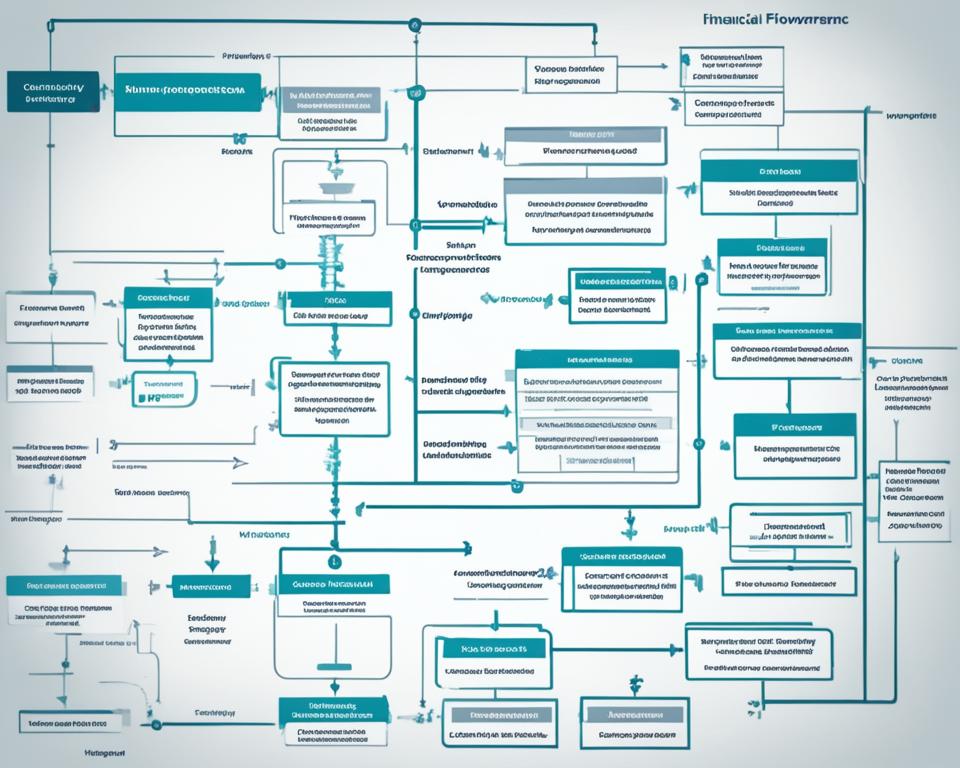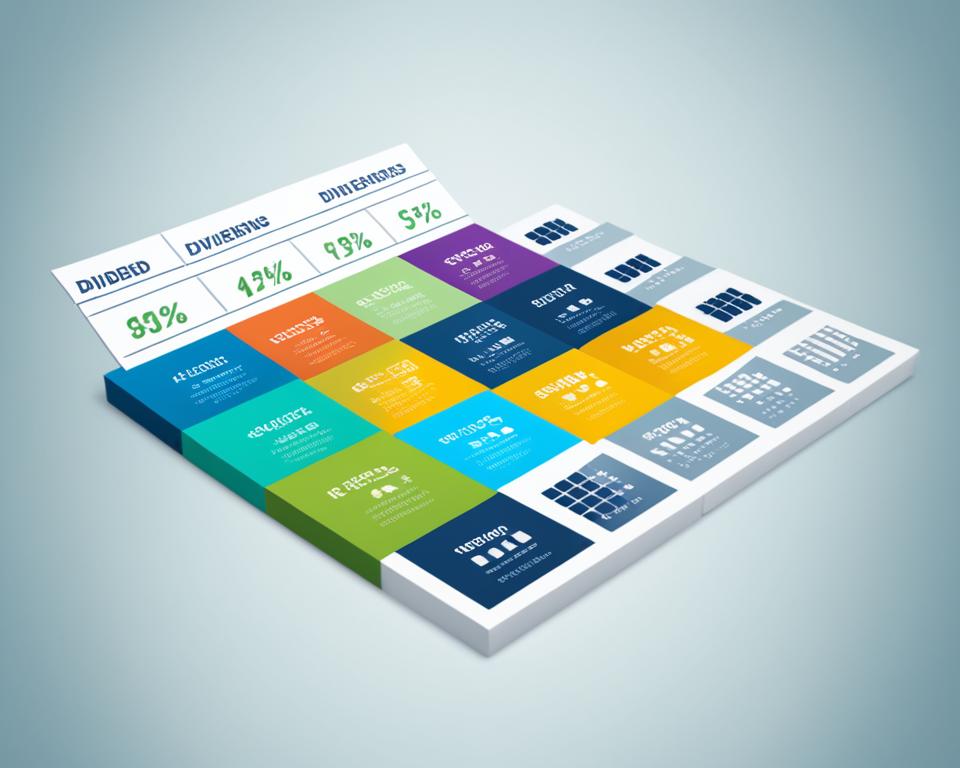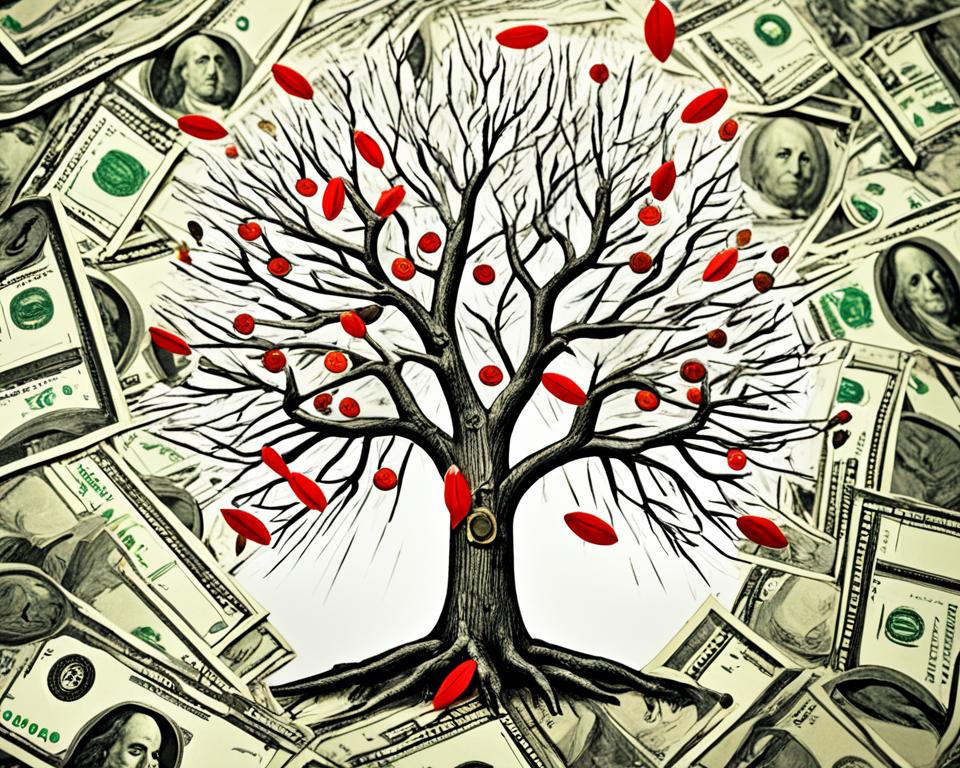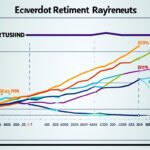When you invest in a company, whether you’ll receive a share of the profits—known as dividends—is influenced by a cocktail of factors. These factors influence a company’s decision to pay dividends, and they can range from how well the company is performing financially to what people like you, the shareholders, prefer. Companies dive into their dividend policy determinants, weighing the pros and cons meticulously before announcing their stance on the distribution of profits. As an investor, you might have your reasons for leaning towards one policy or another—perhaps you prefer the steady income that dividends provide, or maybe you’re more interested in seeing your investment grow as the company reinvests its profits. Whatever your preference, it’s crucial to understand that your returns are dictated not only by the company’s performance but also by its strategic financial decision-making, which considers a host of financial performance indicators.
Companies that decide to distribute dividends often do so as a way to demonstrate financial robustness and commitment to shareholder wealth. On the flip side, a business may retain earnings, signaling a focus on growth and expansion, which could lead to significant capital gains down the line. So, whether you’re eyeing a quarterly dividend cheque or rooting for stock appreciation, the underlying factors holding sway over these corporate decisions are what will ultimately shape your investment outcomes.
Key Takeaways
- The decision to pay dividends is multifaceted, combining company performance with investor expectations.
- Understanding the balance between retained earnings for growth and dividend payouts is essential for investors.
- Mature companies often pay consistent dividends, while growth-focused companies opt to reinvest profits.
- Investors’ preferences play a significant role in shaping a company’s dividend policy.
- Dividend distributions can affect stock market valuation and investor perceptions of company stability.
Understanding Dividends and Their Purpose
Dividends are more than just a shareholder perk—they are a reflection of a company’s health and its board’s corporate governance practices. Their issuance can radiate significant signals to the market concerning residual equity, investor income, and the expectations of capital gains through strategic growth. By diving into the meaning, the role, and the strategic application of dividends, you can better appreciate their significance in your investment journey.
Defining Corporate Dividends
At their core, corporate dividends represent a share of a company’s profits distributed to its stakeholders. These monetary distributions are contingent upon the number of shares an investor holds, serving as a direct link between the company’s earnings and your investor income. It’s a method that not only rewards shareholders but reflects strong corporate governance practices.
The Role of Dividends in Investor Income
As an investor, dividends can be a reliable source of income—payouts that can either be reinvested or used to meet financial obligations. Whether a company chooses to provide dividends depends on its financial standing, growth prospects, and established dividend policy. It’s a complex interplay between rewarding investors today and preserving capital for tomorrow’s growth.
Mature Companies vs. Growth Companies
Typically, mature companies are known for delivering regular dividends due to their established market position and consistent earnings. This in turn indicates fewer reinvestment opportunities, thus favoring direct income distributions. On the contrary, growth companies often reinvest their earnings to fuel expansion, which can lead to considerable capital gains. This reinvestment might be reflected in the stock’s future price appreciation rather than current dividend yield, rewarding patient investors in the long run.
The Great Debate: Pros and Cons of Dividends
As an investor in today’s stock market conditions, you might find yourself at the center of a longstanding debate: should companies implement a dividend policy that rewards shareholders through consistent payouts, or should they reinvest profits to potentially increase future shareholder value? This question isn’t just academic—it’s a practical consideration that affects your bottom line.
On one side of the debate, some financial analysts view dividends as a traditional but optionally necessary remuneration method. They suggest that savvy investors can create “homemade dividends” by simply adjusting their asset allocation to include fixed-income securities when in need of steady cash flow, thus bypassing the need for dividends entirely. This strategy may appeal to investors who are more comfortable with lower risk and prefer predictable income, such as fixed interest payments from bonds.
Moreover, critics who support a minimal or even zero dividend payout argue based on capital gains taxation. They propose that reinvesting funds can boost a company’s long-term value and, consequently, its market price. By prioritizing internal growth opportunities—such as new projects, share repurchases, or asset acquisitions—companies can offer investors larger capital gains with typically lower taxation rates compared to dividend income.
“A dollar today is better than a dollar tomorrow, but a growing dollar tomorrow can outweigh a static dollar today.”
Conversely, proponents of dividends point to them as tangible evidence of a company’s financial success and ability to generate actual earnings. A consistent history of dividend payments often translates to a stable demand for the company’s stock, which can lead to an uptick in market value and the maintenance of shareholder value. In addition, dividends are seen as a seal of approval from the company’s management, indicating future earnings confidence and demonstrating a commitment to returning value to shareholders.
Dividends can also serve as a protective measure against market volatility. In uncertain times, a dividend policy that delivers regular payouts to shareholders provides a buffer—even when stock prices are fluctuating, yields from dividends can offer a reassuring steadiness. This facet holds particular appeal to those shareholders who rely on their investments for a consistent income stream.
Ultimately, the decision on whether dividends or capital reinvestment best serve shareholder interests often relies on a delicate balance, influenced by broader economic conditions and specific investor goals. As you contemplate your own investment strategy, consider that your preference may shift over time with changes in your financial circumstances, market trends, and tax policies.
- Reinvestment advocates argue: Keeping profits within the company presents opportunities for business expansion and capital growth, which could result in enhanced long-term shareholder value.
- Dividend supporters claim: Dividends provide immediate rewards and indicate corporate health, which can attract investors and uphold or increase the stock price.
In conclusion, the decision to pay dividends is multifaceted, requiring a nuanced understanding of dividend policy, stock market conditions, and the implications of capital gains taxation for overall shareholder value. What matters most is finding the approach that aligns with your investment objectives and navigating the market with informed insight.
Financial Performance Indicators and Dividend Policies
Understanding the intersection between dividends and financial performance indicators is key for any savvy investor. These indicators, vital metrics that offer insight into a company’s ability to generate value, play a central role in shaping dividend policies. Specifically, factors like profitability, cash flow analysis, and retained earnings are crucial for investors to consider when evaluating a company’s potential for sustained dividend payouts.
Analyzing Profitability and Earnings
At the heart of dividend decisions lie profitability and earnings. Profitability, a measure of efficiency and success, is often a deciding factor for whether dividends can be issued. Companies with solid profitability can sustain and possibly even increase dividend payouts, reflecting positively on your investment. Cash flow analysis serves as a critical tool here, separating companies with robust financial health from those less secure, and directly impacting dividend yields and frequency.
Considerations for Residual Equity
Post-operating expenses and reinvestments, whatever remains is referred to as residual equity, a financial remainder that companies may allocate to dividends. A comprehensive residual equity analysis helps you understand how a company prioritizes its funds, balancing between retaining earnings to fund future growth and rewarding shareholders through dividends.
Liquidity Constraints on Dividend Decisions
Regardless of a company’s earnings, liquidity—or the lack thereof—can impose significant constraints on its dividend policies. Liquidity measures the readiness of a company to cover immediate obligations without harming its operations. A robust cash flow analysis provides insights into the liquidity level, indicative of a company’s competency in managing its cash resources while maintaining consistent dividend payments.

Let’s delve into some data that brings to light the relationship between financial performance indicators and dividend payments:
| Quarter | Net Income ($M) | Retained Earnings ($M) | Dividend Payout ($M) | Dividend Payout Ratio (%) |
|---|---|---|---|---|
| Q1 | 150 | 75 | 50 | 33.3 |
| Q2 | 175 | 100 | 55 | 31.4 |
| Q3 | 200 | 120 | 60 | 30.0 |
| Q4 | 220 | 140 | 65 | 29.5 |
From examining the table, notice the steady growth in net income and retained earnings, which in turn supports consistent dividend payouts. The slight decrease in the dividend payout ratio suggests a strategic move to retain more earnings for investment opportunities while maintaining a reliable dividend payment to shareholders.
As you reflect on these insights, remember that behind every dividend payment lies a web of financial performance indicators. A strong understanding of profitability, retained earnings, and liquidity not only informs your investment choices but empowers you to anticipate the future financial maneuvers of the companies you invest in.
Corporate Governance and Dividend Decisions
In the landscape of today’s financial markets, corporate governance practices take center stage in the strategic discussions that lead to dividend decisions. As you navigate your investments, it is critical to recognize the influential role that the corporate leaders, particularly the Board of Directors, exert in shaping these outcomes. Their decisions and policies directly impact both the company’s future and your potential returns as a shareholder.
Board of Directors and Dividend Policy Determinants
When considering the declaration of dividends, the Board of Directors must weave a path through a variety of critical factors. Among them, legal stipulations, profit performance, and available cash resources emerge as pivotal determinants. These guiding elements ensure not only adherence to regulatory frameworks but also prudent stewardship of the company’s capital. Efficacious handling of these elements reflects high standards of corporate governance, potentially leading to investor confidence and subsequent valuation premiums.
Impact of Company Policy on Investor Relations
Every dividend payout or retention episode is a touchpoint with you, the investor, making investor relations a key area influenced by company policy. Decisions to share profits as dividends might foster goodwill and a perception of financial strength, while electing to retain earnings for future investment could signal growth aspirations. Herein lies the subtle art of balancing investor sentiment with long-term strategic outlook—a testament to the company’s adept governance capabilities.
The Influence of Shareholder Expectations
Shareholders, such as yourself, bring to the table a spectrum of expectations rooted in financial aspirations and market outlooks. The Board navigates these shareholder expectations with a careful hand, merging them with overarching strategic aims. As stewards of your assets, they must judiciously resolve the tension between offering immediate financial returns and underpinning future corporate success, with each decision underscoring their commitment to both shareholder interests and corporate imperatives.
Legal and Taxation Implications on Dividends
When it comes to dividend distribution, companies must navigate a complex landscape of legal and taxation implications. As a shareholder, understanding the interplay between federal and state laws, as well as the tax considerations, is crucial. These factors not only influence corporate decisions regarding dividend payments but also affect your personal investment outcomes and tax liabilities.
Federal and State Laws Governing Dividends
Within the United States, both federal and state laws play a role in regulating dividend distributions. These laws ensure that companies act in the best interest of all stakeholders, stipulating that dividends should come from genuine profits and not at the cost of the company’s financial health. For instance, federal laws mandate that dividends can only be paid out of current earnings or accumulated profits, providing a safeguard against the erosion of company capital. Additionally, several states require companies to maintain a certain portion of profits as reserves, serving as a buffer during less favorable financial times.
Tax Considerations for Dividend Distribution
Taxation implications are a significant factor in shaping whether companies decide to distribute dividends or retain earnings for growth. Unlike capital gains, which may benefit from lower tax rates, dividends are typically taxed at a higher rate. This distinction influences both corporate strategies and individual investment choices. A savvy investor stays aware of current tax rates on dividend income and capital gains, as these can impact the investment’s after-tax return and may sway a company’s choice between issuing dividends and pursuing growth opportunities that yield capital gains.
| Dividend Type | Tax Rate | Implications for Shareholders |
|---|---|---|
| Qualified Dividends | 0%, 15%, or 20% | Lower tax rates depending on income bracket |
| Non-Qualified Dividends | Ordinary Income Tax Rate | Higher tax rates, akin to regular income |
| Capital Gains | 0%, 15%, or 20% | Potentially lower taxes compared to non-qualified dividends |
Your investment strategy should take these taxation implications into account as they can substantially impact the net value of your investments. Aligning your portfolio to benefit from favorable tax treatments on dividends and capital gains is a key component of smart investing. While corporate decisions around dividend distribution are guided by these federal and state mandates, your investment actions should similarly be informed by the tax landscape to optimize return on your investments.
Dividend-Paying Methods: Which Path to Take?
As you weigh your investment options, understanding the dividend-paying methods companies may adopt can illuminate the potential returns on your portfolio. Choosing the right dividend policy is crucial for companies as it can significantly affect their stock price and investor satisfaction. Let’s explore the paths they might take.
Firstly, a residual dividend policy could be on the table. This method relies on internally generated equity, suggesting that dividends are only paid after meeting all capital investment needs. While this can mean fluctuating payouts, investors could also see substantial gains when the company grows.
On the other side, a stable dividend policy ensures predictable and steady dividend income. Here, companies set dividends at a certain percentage of long-term profits, aiming to give you, the investor, assurance and a clear expectation of returns.
Many companies may find the balanced approach of a hybrid policy the most appealing. It combines the predictability of stable payouts with the opportunity-based payouts of the residual policy. Firms employ a base dividend and then top it up as earnings allow, giving investors a taste of growth-driven rewards while maintaining a steady base return.
A deeper look into these methods can help us understand why a company might opt for one over the other:
- Companies with volatile earnings might prefer the flexibility of a residual policy.
- Those with consistent profits could lean towards a stable policy for predictable payouts.
- A hybrid approach is often favored by companies that wish to reassure investors through baseline dividends while retaining the option to reinvest surplus earnings in potentially lucrative ventures.
Each of these methods has its merits and potential drawbacks. Your decision as an investor might align with one more than the others depending on your financial goals and risk tolerance.
Curious about how different companies approach their dividend policy? Here’s a comparative look:
| Company | Dividend Policy | Dividend Yield | Payout Frequency |
|---|---|---|---|
| Blue Chip Inc. | Stable | 4% | Quarterly |
| Growth Tech | Residual | Variable | Annually |
| Issuer Holdings | Hybrid | 2% + Special Dividends | Semi-Annually |
The choice of dividend policy is a strategic decision that can signal a company’s confidence in its future and its commitment to shareholder returns. As you explore your investment options, consider how each company’s method aligns with your own approach to income and growth. What’s your path?

Market Conditions: Navigating Through Economic Tides
As you seek to maximize your investment returns, it’s imperative to sail the often unpredictable economic tides, being particularly vigilant of the prevailing market conditions. The sheer impact of shifts in interest rates, stock market swings, and changing trade cycles can ripple through your portfolio, redefining the essence of a sound dividend strategy. These financial currents demand your attention for a well-informed dividend investment approach.
Assessing Interest Rates and Stock Market Trends
Consider the sway of interest rates—when they rise, bonds’ fixed-income streams tend to draw investors away from dividend stocks, while lower interest rates can make dividend-paying stocks more attractive. But it doesn’t end there. The overall stock market conditions also shadow dividend decisions, swaying your preferences with each market correction or surge.
In periods where the stock market thrives, companies may flourish, sharing their bounty through generous dividends. Conversely, when market dips resemble troughs in the ocean, they might tighten up the sails and conserve their cash reserves, leading to reduced or stagnant dividend outputs. Thus, vigilance to these trends is crucial for navigating your investment strategy effectively.
Evaluating Trade Cycles for Dividend Strategy
Then you’ve got the role of trade cycles—economic expansion can be an opportune time for companies to distribute higher dividends, mirroring their enhanced profit-making abilities. Yet during the ebb of economic downturns, a focus on safeguarding liquidity might see a curtailment in payouts. These cycles can be pivotal in shaping a proactive dividend strategy that responds adroitly to the ever-changing economic scenario.
Aligning your strategy with these cyclical economic patterns allows for a fluid approach, carefully timing your moves with the broader economic context. The agility to adjust dividend expectations in tandem with the overarching trade cycles could be the difference between a mere floating investment and a thriving one.
Shareholder Preferences: Matching Dividend Expectations
Unraveling the complexities of dividend policies requires a deep dive into the distinct nuances of shareholder preferences. These preferences vary significantly across different investor profiles, such as individual investors and institutional investors, each bringing their unique expectations and investment philosophies to the table. As you consider investing, it’s critical to comprehend how these diverse preferences influence corporate dividend strategies and, ultimately, your portfolio’s performance.
Individual vs. Institutional Investor Demands
On the one hand, individual investors might look for immediate dividend income to supplement their cash flow, particularly during retirement. On the other hand, institutional investors—like pension funds, endowments, or mutual funds—often take a longer view, focusing on a company’s growth trajectory and the potential for substantial capital appreciation. A pension fund, for instance, might prefer reinvested profits that could compound over time, whereas individual investors might require the predictability of quarterly dividend payments to manage personal finances.
Understanding the Psychology of Investor Decisions
The concept of investor psychology is crucial in navigating between differing investor demands. It’s not just about the numbers; it’s about the sentiment and confidence that dividends can engender among shareholders. A consistent dividend policy may articulate stability and attract risk-averse individuals, while a flexible policy, attuned to the dynamic business environment, might align with the strategic goals of institutional investors seeking long-term value.
It’s essential to align your expectations with the companies that reflect your investment philosophy. Whether you gravitate towards the steady stream of dividends or the promise of growth and capital gains, your preference can shape your approach to portfolio management. Companies must also adapt, crafting dividend policies that not only meet but anticipate the complex interplay of shareholder demands to remain competitive and growth-oriented.
Industry Standards and Comparative Dividend Rates
When assessing the financial landscape, an acute awareness of industry standards and comparative dividend rates is essential for any informed investor. By examining how these figures play out across different sectors, one can glean deeply rooted insights into sector dividend practices and the market’s undercurrents. This scrutiny enables investors like you to make more strategic decisions, align investments with industry benchmarks, and potentially optimize the value of your portfolio.
Examining Peers and Sector Dividend Practices
To gauge the appropriateness of a company’s dividend rate, one must first take the measure of its peers. Reviewing the dividend practices of comparable firms within the same industry offers a panoramic view of what’s standard, what’s exceptional, and where your investment target stands. This comparative analysis sheds light on payout ratios, yield trends, and dividend growth, painting a detailed picture of the financial health and shareholder commitment each company embodies.
Aligning within Industry Dividend Norms
Having a finger on the pulse of sector dividend practices is just the beginning; the more challenging aspect is determining whether a chosen investment should follow suit or carve its own path. Companies often rely on their distinctive strategic visions to justify alignment with, or deviation from, industry standards. Companies echoing the industry’s dividend rates can exude reliability, while those with divergent practices might aim to convey a unique vision or a focus on reinvestment and growth.
Here’s a snapshot of how dividend rates shape up across different sectors:
| Sector | Average Dividend Yield | Common Payout Ratio | Sector Trend |
|---|---|---|---|
| Utilities | 3.5% | 60-70% | Stable, slightly increasing yield |
| Technology | 1.2% | 20-30% | Growth, lower yield |
| Healthcare | 1.8% | 40-50% | Steady with potential for yield increase |
| Consumer Goods | 2.5% | 50-60% | Consistent with industry standard |
Understanding how each sector aligns or deviates from these industry standards allows you to tailor your investment approach, whether seeking steady income streams or the potential for long-term capital gains. Investment is a chess game where knowledge of comparative dividend rates and sector dividend practices gives you an upper hand, enabling you to strategize with greater confidence and acuity.

Cash Flow Analysis and Financial Health Metrics
When it comes to assessing the vitality of a company, cash flow analysis stands as an indispensable tool, allowing investors like you to peer into the financial well-being of potential investment targets. It’s this analysis that shines a light on the liquidity—how readily a company can meet its immediate obligations and, importantly, reward its shareholders with dividends. Cash flow analysis dissects a company’s operations, investments, and financial activities to give a clear picture of just how healthy its cash reserves are, which are essential for those coveted consistent dividend payments.
But the inquiry doesn’t stop at cash flow. A deeper exploration into financial health metrics offers a broader understanding of a company’s fiscal stability. Metrics such as retained earnings versus net income speak volumes about how a company is deciding to use its profits. Are they being plowed back into the company to fuel future growth? Or are shareholders enjoying a slice of the profit pie? Retained earnings, in particular, can signal a company’s strategic focus, whether on immediate shareholder return or on long-haul growth and reinvestment.
If your eyes are set on investments that promise ongoing dividend returns, these metrics serve as your roadmap. They’re the signposts indicating whether a company has the solid financial ground needed to sustain those dividends, demonstrating that the company won’t have to sacrifice long-term financial health for short-term payouts.
Consider this scenario: a company with robust net income figures, suggesting healthy profits, might still choose to retain those earnings rather than distribute them as dividends. This decision could denote an anticipatory strategy for expansion, investing in new technology, or entering new markets. Conversely, another company showing similar net income might allocate a substantial sum to dividends, favoring immediate returns to shareholders. Both strategies have their merits, reflecting differing priorities and market positioning.
To truly grasp the implications of these financial health metrics, let’s take a practical approach:
| Financial Metric | Indicator | Implication for Dividend Policy |
|---|---|---|
| Strong Cash Flows | Liquidity | Ability to sustain dividends |
| High Retained Earnings | Funds for Reinvestment | Focus on future growth, may limit current dividends |
| Increased Net Income | Profitability | Potential to increase dividend payouts |
| Consistent Dividend Payments | Shareholder Return | Commitment to returning value to shareholders |
In essence, as you consider potential investments, a comprehensive understanding of cash flow and financial health metrics promises to guide you toward companies capable of paying dividends without jeopardizing their enduring growth and financial resilience. It’s about scouting for businesses that have found the equilibrium—those that skillfully manage their profits to deliver returns to shareholders while also investing in their long-term stability and expansion.
Capital Structure and Dividend Flexibility
The intricate balance of a company’s capital structure is pivotal for maintaining dividend flexibility. It is the equilibrium between debt and equity that dictates a company’s ability to provide shareholder value through dividends, while simultaneously ensuring financial stability. As you contemplate the investment opportunities before you, it’s important to understand how these financial decisions influence returns and underscore the security of your investments.
Balancing Debt and Equity for Optimal Payouts
An optimal capital structure balances debt and equity to support corporate objectives and provide investor returns. A higher ratio of equity can grant more dividend flexibility, often resulting in a company’s ability to offer larger or more regular payouts without compromising its financial health. Conversely, increased debt can limit this flexibility as companies prioritize debt servicing over dividends. The strategic management of this balance is key to ensuring optimal payouts for investors like you.
Risk Management and Dividend Sustainability
Effective risk management is central to dividend sustainability. By maintaining sufficient cash reserves and moderate levels of leverage, companies hedge against economic uncertainties while preserving their ability to pay dividends. Reinforcing dividend sustainability means regularly evaluating and potentially adjusting dividend policies in response to both internal shifts and external market conditions. Wise stewardship here translates not only to a consistent income stream for shareholders but also to robust growth prospects for the company.
Consider your own portfolio as a microcosm of these broad strategic decisions. The value of your investments rides on how well the companies you’ve invested in manage their debt-to-equity ratios and navigate the inherent risks—all while trying to maintain a commitment to returning profits to shareholders. It’s a delicate governance dance that can significantly affect the durability of dividends over the long haul.
The Factors Influence a Company’s Decision to Pay Dividends
Embarking on the journey of dividend investment demands an understanding of the myriad factors that influence a company’s decision to pay dividends. From the labyrinth of legal requirements to the tangible pressures of shareholder desires, a company’s road to declaring dividends is dotted with both obstacles and opportunities. There exists a delicate interplay, where strategic dividend policy choices and dividend decision-making reflect a comprehensive assessment of internal capabilities and external expectations. Allow me to untangle this web and illuminate the key elements at play in this vital corporate decision.
Strategic Dividend Policy Framework
Establishing a strategic dividend policy framework is akin to setting the sails for smooth corporate navigation. It demands acute attention to a company’s earnings, parsing through profits to determine what can be aptly distributed without impinging on the much-needed reserves for innovation and growth. This framework is not static; it adapts to the undercurrents of market realities and aligns with investor sentiments, ensuring that shareholders like you experience a tangible reflection of the company’s success and future potential.
Key Drivers in Dividend Decision-Making
At the heart of dividend decision-making are key drivers—factors that encompass legal stipulations and the size of earnings, to the liquidity available to meet both operational necessities and shareholder expectations. Whether you’re a new investor or seasoned in the game, understanding these drivers allows you to peer into the rationale behind a company’s dividend declarations. In essence, this intricate process seeks to strike a balance, apportioning profits with precision, to foster an ecosystem of growth while ensuring your investments bear fruit.
FAQ
What factors influence a company’s decision to pay dividends?
Factors that influence a company’s decision to pay dividends include financial performance indicators such as profitability and retained earnings, shareholder preferences, industry standards, corporate governance practices, market conditions, taxation implications, cash flow analysis, and the company’s capital structure.
How do dividends serve the income needs of investors?
Dividends provide a direct income stream to shareholders, serving as a return on their investment. Regular dividends can appeal to investors who prioritize consistent income, such as retirees or those seeking a stable cash flow.
Why do mature companies tend to pay dividends while growth companies do not?
Mature companies are more likely to pay dividends because they have consistent profits and fewer high-yield reinvestment opportunities. In contrast, growth companies often reinvest their earnings to fund further expansion, which can lead to higher potential capital gains for investors over the long term.
What are the pros and cons of paying dividends from a company’s perspective?
Pros of paying dividends include signaling financial health, satisfying shareholder expectations, and potentially stabilizing stock prices. Cons include the possibility of reduced funds for reinvestment and growth, as well as higher taxes for investors compared to capital gains.
How do profitability and earnings affect a company’s dividend policy?
A company’s ability to generate consistent positive earnings influences its capacity to sustain dividends. Profitability is a key indicator for the company’s financial well-being and sets the stage for dividend decisions.
What is the impact of corporate governance on dividend decisions?
Corporate governance practices, particularly the actions and policies of the Board of Directors, play a critical role in shaping a company’s dividend policy. They consider various factors such as financial metrics, legal restrictions, and shareholder expectations in their decision-making.
How do legal and taxation implications influence dividend distribution?
Legal constraints may limit dividend payouts to profits, and various regulations could affect the timing and amount of dividends. Taxation implications, such as the potentially higher taxes on dividend income compared to capital gains, also play a role in a company’s decision to distribute dividends.
What are the different methods a company might use to pay dividends?
Companies can adopt various methods such as a stable dividend policy with predictable payouts, a residual dividend policy that prioritizes reinvestment, or a hybrid policy that combines elements of both to balance growth and returns to shareholders.
How do market conditions influence a company’s dividend policy?
Interest rates, stock market trends, and economic cycles can considerably affect a company’s dividend strategy. For instance, during economic growth periods, companies may increase dividends, while during downturns, they might reduce payouts to conserve cash.
How can shareholder preferences impact dividend policy?
Individual investors might prefer regular dividend payments for a steady income, while institutional investors may focus on long-term growth and capital gains. Understanding these preferences is crucial for companies to tailor their dividend policies effectively.
What role do industry standards play in determining dividend rates?
Industry standards can serve as benchmarks for a company’s dividend policy. Companies typically examine the payout ratios and dividend practices of their peers within the industry to ensure their policies are competitive or intentionally differentiated for strategic reasons.
Why is cash flow analysis important in considering dividend payments?
Strong cash flows indicate that a company has the liquidity needed to pay dividends consistently. Cash flow analysis helps assess the company’s operational efficiency and its ability to sustain dividends without compromising its financial health or growth objectives.
How does capital structure affect a company’s ability to pay dividends?
The capital structure, which includes the balance of debt and equity, determines a company’s flexibility in paying dividends. An optimal capital structure ensures the company can manage risks while being able to offer shareholder returns through dividends.
What are the key drivers in a company’s dividend decision-making?
The key drivers in dividend decision-making include assessing the company’s financial performance, adhering to corporate governance standards, meeting legal requirements, considering taxation effects, analyzing market conditions, aligning with shareholder expectations, and ensuring balance within the capital structure for future growth and sustainability.












